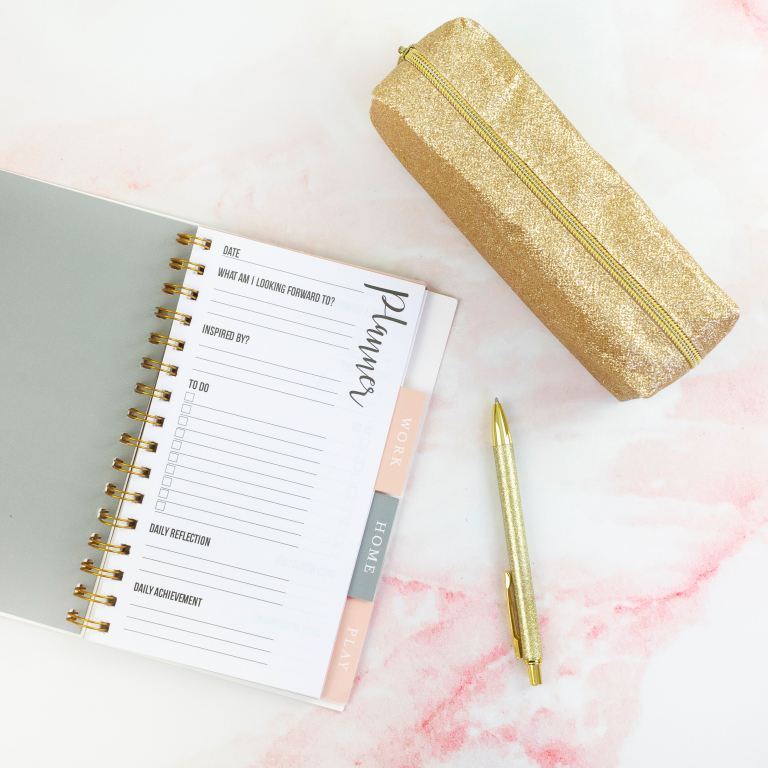The Science Of Saving Your Sex Life: What You Might Not Know About Sexual Desire
Pleasure isn’t obvious. Pleasure isn’t just “touch me here” or “talk dirty to me.” Pleasure depends on context.


Amanda Blackie Parrish used to have a thriving sex drive, but not anymore. Interviewed by Cosmo about the search for a “pink pill” for women’s sexual dysfunction, she said she had previously experienced desire easily, but now that desire was gone. As she said in the article:
“Once I started, it wasn’t an issue. It was getting me started.”
In this Marie Claire article, another woman, Cara, said: “I miss really wanting to have sex. I hate having to ‘wind myself up’ to do it. It makes me feel broken. It takes a really dedicated effort for me to be there physically and mentally.”
Amanda and Cara share the narrative of having previously experienced sexual desire spontaneously, almost out of the blue, but now find it much more difficult to achieve. There are many more women like Amanda and Cara — Melanie in this HuffPo article and Carla in this NPR story — whose relationships are strong, their health is good, yet their desire is nowhere to be found.
They feel broken. The lack of desire is hurting their relationships, as well as their personal wellbeing. And so they spoke out about wanting a drug to bring it back.
Of course they feel broken. They’ve been taught the same thing that the rest of us have been taught about sexual desire: that it’s supposed to be like our fairy godmother, appearing out of nowhere to grant our wishes.
But what we were taught was wrong. A lie. The last twenty years of sex research have shown that that fairy godmother model of sexual desire can be accurate — sometimes, for some people. But for others, desire works in a totally different way.
And if Amanda and Cara knew the truth, maybe they wouldn’t feel broken. Maybe they’d feel whole and healthy and normal and in control of their sexual well-being. And maybe their relationships wouldn’t suffer, as well.
What I want Amanda and Cara — and everyone else — to know is:
1. What science actually tells us about sexual desire,
2. The consequences of the myth of the fairy godmother of desire, and
3. How we can use the science to maximize our sexual potential.
So that’s what I’m going to share with you here. Ready? Okay.
The Science Of Desire
Let’s start with a crash course in the science of sexual desire:
Your brain has a pair of mechanisms called the Sexual Excitation System (SES) and the Sexual Inhibition System (SIS) — I just call them the accelerator and the brake. The accelerator notices all the sexy things in the environment and sends the signal that says, “Turn on!” At the same time that’s happening, the brake notices all the very good reasons not to be turned on right now, all the potential threats, and sends a signal that says, “Turn off!”
So the process of becoming aroused is the dual process of turning on the ons and turning off the offs. And desire emerges when enough ons are on and enough offs are off for a person to feel motivated to pursue sexual stimulation.
For some people, “enough” is one stray thought, in the middle of a business meeting, about their partner’s thighs. These folks have what we generally call “spontaneous” desire. It feels like it’s emerging almost from nowhere, out of the blue, like your fairy godmother.
For others, it takes a more specific context and more explicit stimulation — an hour of flirting and teasing at the party, followed by necking at the stop lights on the drive home — before their arousal crosses a threshold into desire.
And most of us experience both, at different times in our lives.
The second option is called “responsive” desire, emerging in response to, rather than anticipation of, sexual arousal. It’s a different style of experiencing desire, not inherently better or worse than desire that feels “spontaneous.”
And that’s what Amanda and Cara were experiencing. See it?
“Once I started, it wasn’t an issue. It was getting me started.” And: “It takes a really dedicated effort for me to be there physically and mentally.”
So if they’re normal and healthy, why were they participating in a drug trial for sexual desire?
The Consequences Of The Myth Of The Fairy Godmother
Most of us learned that desire is “supposed” to be spontaneous. First you want it, then you do it, then you’re satisfied, says the traditional model. Desire just appears — like Cinderella’s fairy godmother. A flash of light, a puff of smoke, and there it is, at your service.
That traditional model is wrong, but look what happens when you believe in it:
If you believe your desire has to be spontaneous in order to be healthy, then you (and your partner) will feel like there’s something wrong with you when you’re experiencing desire as mostly responsive.
And does feeling like there’s something wrong with your sexuality activate the accelerator? Does it make it easier to experience spontaneous desire?
Heck no. Feeling broken hits the brakes.
So you try to fix this problem — maybe with lube and lingerie and erotica and games… and these strategies might help.
Or they might not.
And if they fail to create “spontaneous” desire, you’ll feel even more broken. And eventually, you may give up. It may disrupt your relationship, or even destroy it.
To Maximize Your Potential, Maximize Pleasure
So what do we do?
I’m about to suggest that you schedule sex into your day or night, and many people will roll their eyes.
See, part of the myth of the fairy godmother is that if we really wanted our partners enough, we wouldn’t “have to” plan sex; it would just happen. Our fairy godmother would show up on cue, even on demand, if only we were sufficiently in love with or turned on by our partners.
I’m not sure how we got to a place, as a culture, where the automatic, involuntary reactions of our body, like spontaneous desire, are perceived as better indicators of what we want and like than our intentional, deliberate actions.
I’m not sure why I’m a “better” or “healthier” lover to my partner if I get a little hot and bothered when I read a funny tweet of his, than if I mark “snuggle time” in my calendar for Sunday at 2 and show up in nothing but a playful mood and a cute pair of panties.
In short, I’m not sure why “wanting” matters so much more than “liking.”
But here’s one thing I am sure about: You can maximize responsive desire by radically rethinking what desire, initiation, and sexual play look like in your relationship.
“Normal” can absolutely include the spontaneous, out-of-the-blue sexytimes that appear like a gift that brightens your day.
But “normal” can also include sex that’s scheduled and planned for — that “dedicated effort” that Cara described.
Responsive desire is not so much a fairy godmother as a partner in crime in a heist movie, requiring a little bit of luck and a whole lotta planning — floor plans, timelines, getaway cars and all.
Schedule intimate time together. Show up at the appointed time in a curious or neutral state of mind. Get in bed together, skin to skin, and see what happens, without expectation or demand. Be kind to each other, and affectionate. Allow desire to grow in response to a slow warm up.
Maybe you’ll just fall asleep instead of having sex (and it seems to me that that’s your body making it clear that sleep is a more urgent need for you than sex, and there’s nothing necessarily pathological about being sleep deprived).
Or maybe you’ll end up with your mouths all over each other’s bodies. What matters is not what you do, but that you both like what happens.
That is not problematic sex. That is healthy, happy sex.
No fairy godmother in sight.
“But if we have to plan it,” one woman asked me recently, “doesn’t that mean we don’t really value it enough?”
I answered, “On the contrary, when we plan it, that shows better than anything that we do value it.”
Our willingness to prioritize sex, to create space for it in lives filled with work and family and friends and householding, to put all of that aside and just share pleasure with your partner, how can that be anything other than romantic?
Let What You Like Guide You To What You Want
This idea of responsive desire raises an important question about consent, right? We encourage people to say yes to sex, and to initiate sex, when they want it — and if they don’t want it, we encourage them to say no. And we encourage people not to push sex on those who don’t want it.
But what if “wanting it” only emerges after the “it” has begun? How do you consent to sex you’re perfectly happy to want to want but simply don’t have an urgent hankering for? How do you initiate sex with a person who is not hankering the way you are?
The answer is: Let pleasure guide you. Say yes to what gives you pleasure.
Pleasure isn’t obvious. Pleasure isn’t just “touch me here” or “talk dirty to me.” Pleasure depends on context.
Take tickling: suppose your certain special someone tickles you while you’re in a sexy, flirty, affectionate state of mind. Tickling isn’t everyone’s favorite, but you can imagine, at least hypothetically, that that could feel good and fun and even potentially lead to further play.
But if that same certain special someone tickles you while you’re frustrated, annoyed, or pissed off with them, how would that feel? “Stabby,” one woman said when I asked an audience this question. “Like you want to punch them in the face,” said another.
It’s the same sensation in both cases — tickling by your partner — but because the context is different, it’s a totally different perception — pleasurable, or not. And that’s normal. No one would judge you or call you crazy for not liking to be tickled while you’re pissed off.
The same applies to all sexual pleasure, from handholding to orgasm. Desire emerges in response to pleasurable stimulation — that is, sensation that happens in a context that facilitates pleasure. What I call a “sex positive” context.
For some people, almost any context can be sex positive and it takes very little stimulation to shift them into desire, and for others their desire requires more specific contexts. Remember: one stray thought about your partner’s thighs, versus an hour of flirting and necking.
Saying yes to pleasure means saying yes to the contexts that allow you to experience pleasure.
What the science tells us is that responsive desire — desire that emerges in response to arousal in a sex-positive context — is a normal, healthy way to experience desire. It’s a desire style more characterized by paying attention to pleasure and enjoying the sex you’re having, than by the urgent hankering for sex.
And I can’t help thinking that a culture that values wanting over liking is a culture that has a vested interest in our feeling perpetually unfulfilled, perpetually in search of the next new something that will help us to feel… satisfied.
We talk a lot about how much we want sex (or not) — and drug companies are trying to help us want it more. They would like to be our fairy godmother.
What if, instead, we talked about how much we enjoy sex (or not)? What if we talked about ways to create contexts that give us pleasure, rather than desire? What if we didn’t expect desire to be our fairy godmother, but our partner in playful, giggling crime?
I’m not saying we have to. I’m just saying…what if? ![]()




